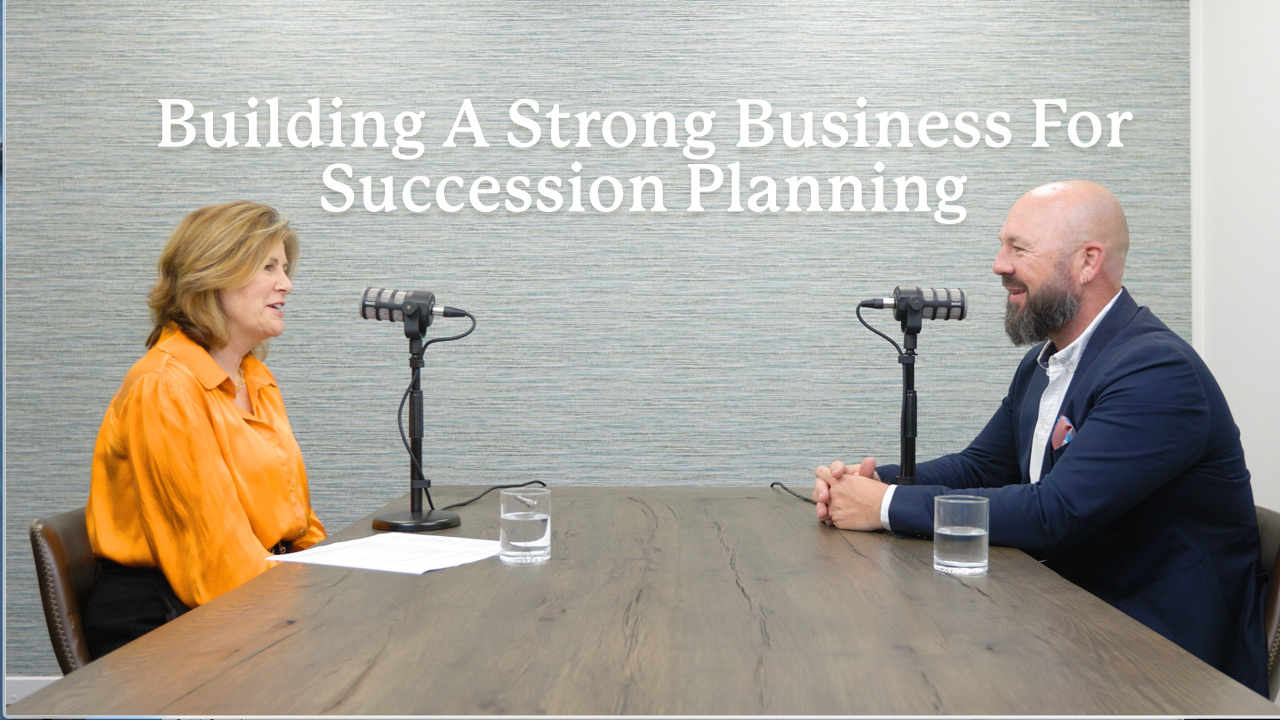Louise and Brad discuss the factors and steps you should consider before selling, exiting or handing over your business. They explore what do you need to do now, or at least 5 years prior, so you can succeed outside of your business and reach the financial freedom you have worked so hard for.
Preparing for the Future: Effective Strategies for Business Succession Planning
Succession planning involves preparing for the eventual exit from your business. This process is not just about finding a replacement but about building a business that can thrive without you. Many business owners believe their business cannot survive without them, but this mindset can be detrimental. A business that is overly dependent on its owner often has little value to potential buyers.
Dreaming and Planning
A key component of succession planning is to start with a dream. Think about your life after the business: what do you want to do, and what kind of lifestyle do you envision? This dreaming phase is best done during a time when you can think freely, such as on a holiday. Consider your ideal retirement age and the financial requirements to support your desired lifestyle.
Financial Considerations
Retirement often requires substantial financial planning. Many people mistakenly believe they can live on less money in retirement, but this is not always the case, especially if you plan to travel or engage in hobbies that require funding. Start by determining what you need to retire comfortably, then work backwards to assess what your business needs to generate to meet those goals.
Building Business Value
To ensure your business is valuable when you decide to exit, focus on growth and sustainability. This includes:
- Creating a Vision and Goals: Clearly define your end goals and the legacy you want to leave. This will help you and your team stay focused and motivated.
- Innovation and Adaptation: Stay ahead of technological advancements and industry changes. This not only keeps your business competitive but also increases its value.
- Team Development: Cultivate leadership within your team. Your business should be able to function smoothly without your constant oversight. This increases the attractiveness of your business to potential buyers.
- Long-term Relationships: Build and maintain strong relationships with clients and employees. A loyal customer base and a committed team add significant value to your business.
Practical Steps for Succession Planning
- Set Clear Goals: Have a clear vision of what you want your business to achieve before you exit. This includes financial goals, legacy goals, and personal goals.
- Evaluate Your Business: Regularly assess the value of your business and identify areas for improvement. Look at profitability, client relationships, and operational efficiency.
- Develop Leadership: Identify potential leaders within your team and invest in their development. This ensures continuity and stability.
- Financial Planning: Get experienced, professional guidance to understand the financial implications of your exit. This includes valuing your business, tax planning, and investment strategies.
- Create a Timeline: Ideally, start planning at least five years before you intend to exit. This gives you enough time to implement changes and maximise your business’s value.
- Communication: Keep open lines of communication with your team and stakeholders. Transparency about your succession plans can build trust and ensure a smooth transition.
Overcoming Challenges
One common challenge in succession planning is starting too late. Many business owners only think about succession when they are ready to retire, which is often too late to make necessary adjustments. Planning early allows you to strategically grow your business and prepare it for a smooth transition.
Another challenge is identifying the right successor. This could be an internal candidate, such as a current employee, or an external buyer. Both options require careful consideration and planning. Internal candidates may need training and development, while external buyers will need to see the value in your business.
You Can Do It!
Louise’s success story of a 59-year-old business owner who transformed his business from being worth nothing to a thriving enterprise within six years, highlights the power of strategic planning and execution. Key steps in such transformations include regular mentoring, strategic planning, and a focus on building long-lasting client relationships.
If you found this article helpful and want to discuss strategies for your business, contact Louise Neville at Accounting Solutions Limited today!
